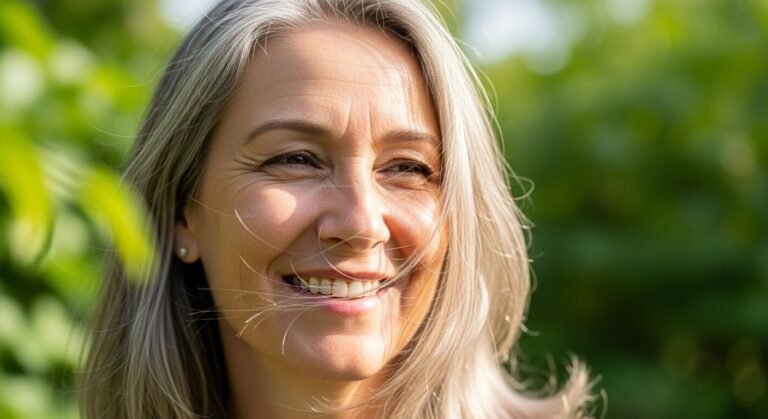Is Hair Loss Reversible After Menopause
Hair thinning or shedding after menopause can be frustrating but here’s the good news: in many cases, it can be managed or even reversed with the right approach. Understanding why it happens and what steps actually make a difference can help you bring life back to your strands.
Let’s break down what’s really happening with your hair during menopause, and how you can help it grow back healthier and stronger.
Why Hair Loss Happens After Menopause
During menopause, your body’s estrogen and progesterone levels drop. These hormones help keep hair thick and in its growth phase longer. When they decline, hair follicles shrink, leading to thinner strands and slower growth.
Meanwhile, androgens (male hormones) become more dominant, which can trigger follicle sensitivity — especially around the crown or hairline.
Common causes include:
- Hormonal changes (especially lower estrogen)
- Nutrient deficiencies (like iron, zinc, or vitamin D)
- Chronic stress
- Poor scalp circulation
- Certain medications

Signs Your Hair Loss Might Be Reversible
Not all hair loss after menopause is permanent. Here are key signs that it can be improved or reversed:
- You’re noticing more shedding than patchy bald spots.
- Hair feels thinner but still grows (even if slowly).
- You recently experienced stress, illness, or major hormonal change.
- Your scalp is still healthy — no scarring or inflammation.
These signs suggest your hair follicles are still active and can respond to treatment. The earlier you start caring for your scalp and hair, the better your results.
Simple Steps to Support Hair Regrowth
1. Feed Your Hair from Within
What you eat matters. Focus on foods rich in protein, iron, and omega-3s.
Try adding:
- Salmon or sardines (for healthy fats)
- Spinach and lentils (for iron and folate)
- Eggs and nuts (for protein and biotin)
If your diet lacks these nutrients, talk to your doctor about supplements like biotin, vitamin D, or zinc.

2. Focus on Scalp Health
Think of your scalp as the “soil” where your hair grows. Healthy roots start there.
Try these easy habits:
- Massage your scalp for 5 minutes daily to increase blood flow.
- Use mild, sulfate-free shampoos.
- Avoid tight hairstyles that pull on the roots.
- Exfoliate your scalp once a week to remove buildup.
You can also use natural oils like rosemary, peppermint, or argan oil to improve circulation and strengthen follicles.

3. Try Hair Growth Treatments
If you want faster results, medical treatments can help reactivate follicles.
Options include:
- Topical minoxidil (Rogaine) — proven to stimulate regrowth.
- Low-level laser therapy — gentle light that boosts scalp circulation.
- PRP (Platelet-Rich Plasma) — a dermatologist injects your own plasma to stimulate growth.
Always consult your doctor before starting any treatment. Sometimes a combination of medical and natural methods works best.
4. Manage Stress and Sleep
Hormonal hair loss often gets worse with chronic stress and poor sleep.
Try small but powerful changes like:
- Yoga or meditation for 10 minutes a day.
- A consistent sleep schedule (7–8 hours nightly).
- Reducing caffeine and alcohol before bed.
Your body (and hair) heal best when you rest.

5. Style Smart
Avoid excessive heat or harsh chemical treatments. When styling, use heat protectant sprays and avoid pulling your hair too tight.
Opt for:
- Loose braids or buns.
- Air drying instead of blow drying.
- Wide-tooth combs instead of fine brushes.
Gentle handling prevents further breakage and allows new growth to thrive.
When to See a Professional
If your hair loss feels sudden, patchy, or is accompanied by scalp irritation, it’s worth consulting a dermatologist or trichologist.
They can:
- Test hormone and nutrient levels.
- Rule out thyroid issues or autoimmune disorders.
- Suggest personalized treatments.
Getting professional advice early can make a big difference in regrowth success.
Final Takeaway
Post-menopausal hair loss isn’t always permanent but it does require consistent care and patience. With the right mix of nutrition, scalp health, gentle styling, and targeted treatments, many women see visible improvement within months.

💛 Save this post as your go-to guide for managing hair loss after menopause and start your journey toward healthier, fuller hair today.
Read More: Picture Day Hairstyles For Kids






